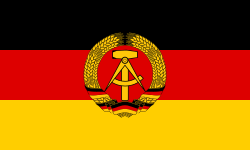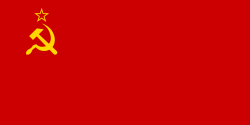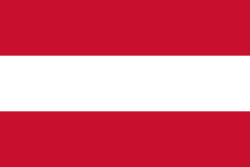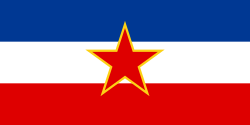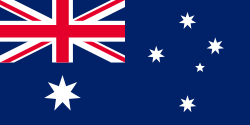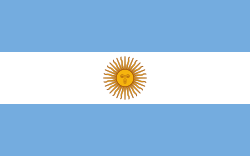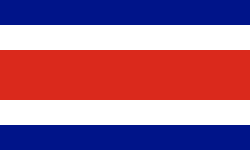Olympische Winterspiele 1984/Biathlon – Einzel (Männer)
| Sportart | Biathlon | ||||||||
| Disziplin | 20 km Einzel | ||||||||
| Geschlecht | Männer | ||||||||
| Teilnehmer | 63 Athleten aus 25 Ländern | ||||||||
| Wettkampfort | Igman, Veliko Polje | ||||||||
| Wettkampfphase | 11. Februar 1984 | ||||||||
| Siegerzeit | 1:08:16,31 h | ||||||||
| |||||||||
| |||||||||
| Sprint | Männer |
| Einzel | Männer |
| Staffel | Männer |
Das 20-km-Einzelrennen der Männer im Biathlon bei den Olympischen Winterspielen 1984 wurde am 11. Februar 1984 um 8:50 Uhr Ortszeit in Veliko Polje am Berg Igman ausgetragen. ausgetragen. Es gingen insgesamt 63 Athleten aus 25 Nationen an den Start.
Olympiasieger wurde der Deutsche Peter Angerer, der mit der zweitschnellsten Laufzeit und dem besten Schießresultat die Goldmedaille erhielt vor Frank-Peter Roetsch aus der DDR, der Silber gewann. Die Bronzemedaille sicherte sich Eirik Kvalfoss aus Norwegen, der zwar die schnellste Laufzeit erzielte, allerdings insgesamt fünf Scheiben beim Schießen verfehlte.
Ergebnisse
| Rang | # | Athlet | Nation | Zeit (h) | Strafminuten (L+S+L+S) | Defizit (min) |
|---|---|---|---|---|---|---|
| 1 | 59 | Peter Angerer | 1:11:52,7 | 2 (0+1+1+0) | – | |
| 2 | 42 | Frank-Peter Roetsch | 1:13:21,4 | 3 (0+2+0+1) | +1:28,7 | |
| 3 | 31 | Eirik Kvalfoss | 1:14:02,4 | 5 (2+1+1+1) | +2:09,7 | |
| 4 | 26 | Yvon Mougel | 1:14:53,1 | 4 (1+2+0+1) | +3:00,4 | |
| 5 | 50 | Frank Ullrich | 1:14:53,7 | 3 (1+0+1+1) | +3:01,0 | |
| 6 | 56 | Rolf Storsveen | 1:15:23,9 | 4 (1+0+1+2) | +3:31,2 | |
| 7 | 23 | Fritz Fischer | 1:15:49,7 | 4 (2+0+0+2) | +3:57,0 | |
| 8 | 61 | Leif Andersson | 1:16:19,3 | 3 (1+2+0+0) | +4:26,6 | |
| 9 | 57 | Andreas Zingerle | 1:16:21,7 | 4 (0+3+0+1) | +4:29,0 | |
| 10 | 37 | Jan Matouš | 1:16:39,0 | 5 (0+1+0+4) | +4:46,3 | |
| 11 | 9 | Sven Fahlén | 1:18:10,8 | 6 (1+0+3+2) | +6:18,1 | |
| 12 | 28 | Tapio Piipponen | 1:18:38,4 | 6 (2+2+2+0) | +6:45,7 | |
| 13 | 54 | Wladimir Welitschkow | 1:18:47,1 | 5 (0+2+0+3) | +6:54,4 | |
| 14 | 52 | Jim Wood | 1:18:55,8 | 4 (0+1+1+2) | +7:03,1 | |
| 15 | 48 | Zdeněk Hák | 1:19:05,5 | 6 (2+2+0+2) | +7:12,8 | |
| 16 | 46 | Arto Jääskeläinen | 1:19:23,3 | 5 (1+2+0+2) | +7:30,6 | |
| 17 | 14 | Sergei Bulygin | 1:19:28,0 | 7 (1+1+2+3) | +7:35,3 | |
| 18 | 19 | Keijo Tiitola | 1:19:32,8 | 5 (1+1+2+1) | +7:40,1 | |
| 19 | 8 | Marco Zanon | 1:19:59,9 | 4 (0+1+2+1) | +8:07,2 | |
| 20 | 30 | Ronnie Adolfsson | 1:20:12,2 | 8 (2+4+0+2) | +8:19,5 | |
| 21 | 58 | Francis Mougel | 1:20:20,5 | 7 (1+4+1+1) | +8:27,8 | |
| 22 | 15 | Ernst Reiter | 1:20:37,4 | 5 (2+1+0+2) | +8:44,7 | |
| 23 | 3 | Christian Poirot | 1:20:54,2 | 6 (1+1+0+4) | +9:01,5 | |
| 24 | 16 | Odd Lirhus | 1:20:55,0 | 9 (1+5+1+2) | +9:02,3 | |
| 25 | 2 | Jaromír Šimůnek | 1:21:04,3 | 6 (1+3+1+1) | +9:11,6 | |
| 26 | 29 | Lyle Nelson | 1:21:05,4 | 7 (2+3+1+1) | +9:12,7 | |
| 27 | 5 | Spas Slatew | 1:21:10,9 | 5 (1+1+0+3) | +9:18,2 | |
| 28 | 32 | Adriano Darioli | 1:21:14,0 | 8 (3+1+0+4) | +9:21,3 | |
| 29 | 10 | Holger Wick | 1:21:19,1 | 9 (3+2+2+2) | +9:26,4 | |
| 30 | 6 | Franz Schuler | 1:21:23,0 | 5 (0+1+2+2) | +9:30,3 | |
| 31 | 53 | Beat Meier | 1:21:24,4 | 7 (0+2+2+3) | +9:31,7 | |
| 32 | 43 | Dmitri Wassilijew | 1:22:09,2 | 8 (3+1+1+3) | +10:16,5 | |
| 33 | 55 | Glen Eberle | 1:22:15,0 | 4 (2+2+0+0) | +10:22,3 | |
| 34 | 60 | Alfred Eder | 1:22:52,6 | 6 (1+2+1+2) | +10:59,9 | |
| 35 | 47 | Juri Kaschkarow | 1:22:53,8 | 11 (3+2+2+4) | +11:01,1 | |
| 36 | 22 | Rudolf Horn | 1:23:10,8 | 8 (1+2+3+2) | +11:18,1 | |
| 37 | 17 | Charles MacIvor | 1:23:37,5 | 7 (2+2+2+1) | +11:44,8 | |
| 38 | 11 | Yoshinobu Murase | 1:23:39,1 | 6 (2+1+0+3) | +11:46,4 | |
| 39 | 49 | Shōichi Kinoshita | 1:23:49,8 | 7 (1+2+1+3) | +11:57,1 | |
| 40 | 21 | Juri Mitew | 1:24:05,4 | 8 (1+2+2+3) | +12:12,7 | |
| 41 | 63 | Andrej Lanišek | 1:24:23,1 | 6 (0+4+0+2) | +12:30,4 | |
| 42 | 39 | Isao Yamase | 1:25:09,6 | 7 (1+3+2+1) | +13:16,9 | |
| 43 | 62 | Imre Lestyan | 1:25:26,6 | 6 (2+1+1+2) | +13:33,9 | |
| 44 | 24 | Tony McLeod | 1:25:34,5 | 8 (4+1+0+3) | +13:41,8 | |
| 45 | 64 | Zsolt Kovács | 1:26:18,7 | 7 (3+2+0+2) | +14:26,0 | |
| 46 | 1 | Marjan Vidmar | 1:26:32,1 | 8 (2+3+2+1) | +14:39,4 | |
| 47 | 38 | Andrew Paul | 1:26:38,7 | 5 (0+2+1+2) | +14:46,0 | |
| 48 | 33 | Jure Velepec | 1:27:05,8 | 6 (3+1+1+1) | +15:13,1 | |
| 49 | 18 | Mihai Rădulescu | 1:27:18,1 | 8 (0+2+4+2) | +15:25,4 | |
| 50 | 41 | Vladimir Todaşcă | 1:28:00,9 | 8 (1+2+2+3) | +16:08,2 | |
| 51 | 12 | János Spisák | 1:28:06,9 | 8 (0+4+1+3) | +16:14,2 | |
| 52 | 44 | Sun Xiaoping | 1:28:07,1 | 8 (2+2+2+2) | +16:14,4 | |
| 53 | 20 | Martin Hagen | 1:30:19,8 | 12 (2+4+2+4) | +18:27,1 | |
| 54 | 27 | Liu Hongwang | 1:31:47,5 | 12 (3+2+4+3) | +19:54,8 | |
| 55 | 13 | Víctor Figueroa | 1:34:02,3 | 7 (2+2+2+1) | +22:09,6 | |
| 56 | 4 | Manuel García Valinas | 1:34:12,4 | 10 (2+3+3+2) | +22:19,7 | |
| 57 | 40 | Cecilio Fernández | 1:34:42,0 | 9 (3+2+2+2) | +22:49,3 | |
| 58 | 36 | Luis Ríos | 1:42:17,9 | 10 (2+2+4+2) | +30:25,2 | |
| 59 | 34 | Ueng Ming-yih | 1:45:07,0 | 8 (2+2+1+3) | +33:14,3 | |
| 60 | 45 | Hwang Byung-dae | 1:49:49,9 | 15 (3+4+4+4) | +37:57,2 | |
| 61 | 35 | Hernán Carazo | 2:24:54,9 | 11 (3+3+3+2) | +73:02,2 | |
| — | 7 | Long Yunzhou | DNF | (4+4+x+x) | ||
| — | 25 | László Palácsik | DNF | |||
| — | 51 | Oscar di Lovera | DNS | |||
Weblinks
- Ergebnisse in der Datenbank von Olympedia.org (englisch)
Auf dieser Seite verwendete Medien
Olympic Rings without "rims" (gaps between the rings), As used, eg. in the logos of the 2008 and 2016 Olympics. The colour scheme applied here was specified in 2023 guidelines.
Olympic Rings without "rims" (gaps between the rings), As used, eg. in the logos of the 2008 and 2016 Olympics. The colour scheme applied here was specified in 2023 guidelines.
Autor/Urheber: B1mbo, Lizenz: CC BY-SA 2.5
Zeichnung einer Goldmedaille, basierend auf Olympic rings.svg.
Autor/Urheber: B1mbo, Lizenz: CC BY-SA 2.5
Zeichnung einer Silbermedaille, basierend auf Olympic rings.svg.
Die Staatsflagge der Deutschen Demokratischen Republik, vom 1. Oktober 1959 bis 3. Oktober 1990
Autor/Urheber: B1mbo, Lizenz: CC BY-SA 2.5
Zeichnung einer Bronzemedaille, basierend auf Olympic rings.svg.
Flag of Italy from 1946 to 2003, when exact colors were specified.
Autor/Urheber: Scroch, Lizenz: CC BY-SA 3.0
Flag of Bulgaria (1971-1990). Flag of Bulgaria with Bulgarian coat from 1971.
Autor/Urheber: Scroch, Lizenz: CC BY-SA 3.0
Flag of Bulgaria (1971-1990). Flag of Bulgaria with Bulgarian coat from 1971.
Flagge des Vereinigten Königreichs in der Proportion 3:5, ausschließlich an Land verwendet. Auf See beträgt das richtige Verhältnis 1:2.
Flagge des Vereinigten Königreichs in der Proportion 3:5, ausschließlich an Land verwendet. Auf See beträgt das richtige Verhältnis 1:2.
Flagge Österreichs mit dem Rot in den österreichischen Staatsfarben, das offiziell beim österreichischen Bundesheer in der Charakteristik „Pantone 032 C“ angeordnet war (seit Mai 2018 angeordnet in der Charakteristik „Pantone 186 C“).
Die quadratische Nationalfahne der Schweiz, in transparentem rechteckigem (2:3) Feld.
Variant version of a flag of Japan, used between January 27, 1870 and August 13, 1999 (aspect ratio 7:10).
Variant version of a flag of Japan, used between January 27, 1870 and August 13, 1999 (aspect ratio 7:10).
Flag of the Socialist Federal Republic of Yugoslavia (1946-1992).
The design (blazon) is defined in Article 4 of the Constitution for the Republic of Yugoslavia (1946). [1]
Flag of Romania, (21 August 1965 - 22 December 1989/officialy 27 December 1989).

Construction sheet of the Flag of Romania as depicted in Decree nr. 972 from 5 November 1968.
- l = 2/3 × L
- C = 1/3 × L
- S = 2/5 × l
Flag of Australia, when congruence with this colour chart is required (i.e. when a "less bright" version is needed).
See Flag of Australia.svg for main file information.Chinese Taipei Olympic Flag. According to the official website of Chinese Taipei Olympic Committee, Blue Sky(circle) & White Sun(triangles) above the Olympic rings is neither the National Emblem of the Republic of China, nor the Party Emblem of Kuomintang (KMT), but a design in between, where the triangles do not extend to the edge of the blue circle, as registered at International Olympic Committee in 1981 and digitally rendered in 2013. Besides, the blue outline of the five-petaled plum blossom is broader than the red one. Moreover, the CMYK code of the blue one and the Blue Sky & White Sun is "C100-M100-Y0-K0", and different from the Olympic rings (C100-M25-Y0-K0). Note that it's the only version recognized by IOC.
Flag of South Korea (1949-1984)
Pictograms of Olympic sports - Biathlon



